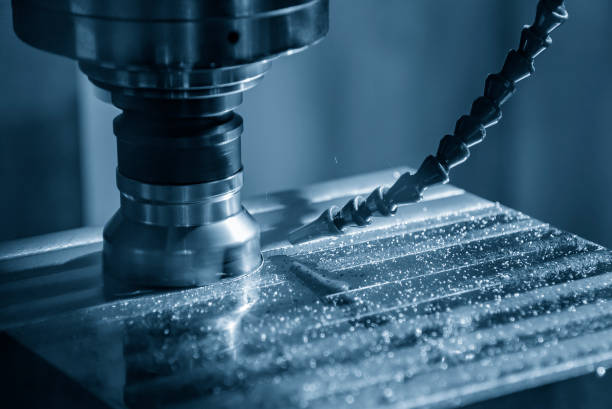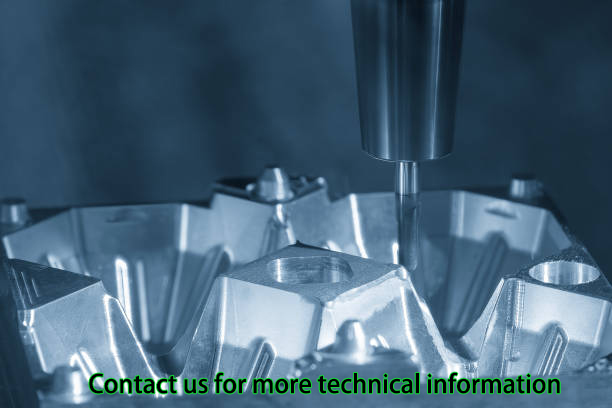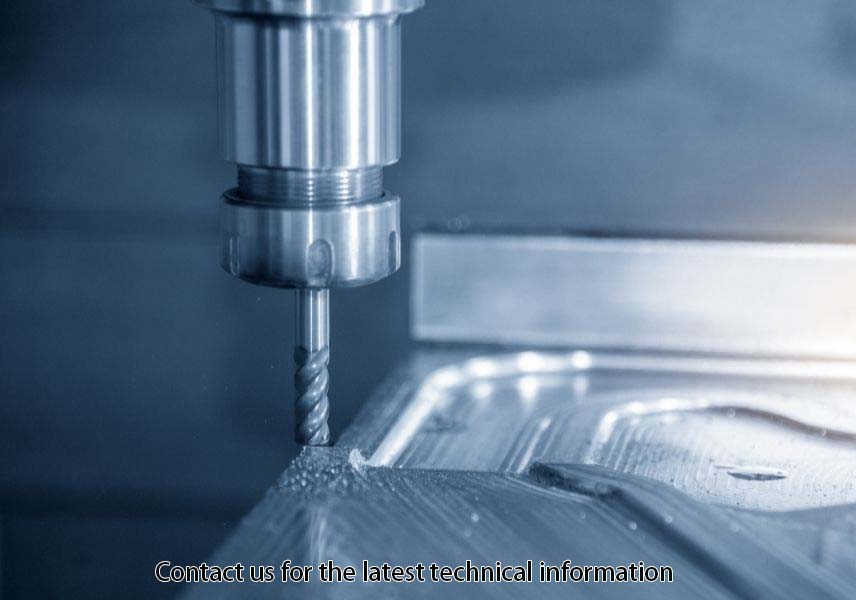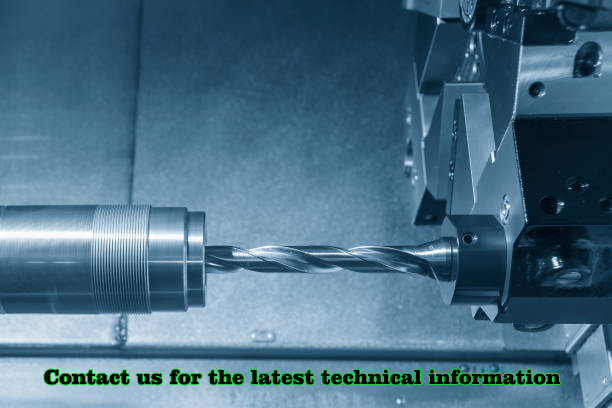Introduction
CNC machined parts are the primary elements of the contemporary production process, being precise and highly versatile for their use across industries. CNC (Computer Numerical Control) machining is a technology-driven technique that has evolved to automatically perform the cutting, shaping, and finishing of materials with precision. These machined parts are crucial in the development of parts features required in the design and implementation the detailed features with geometrical complexities. In the aerospace, automotive, medical devices, and consumer electronics industries, CNC machined parts have high advantages in quality, efficiency, and cost. In this article, we will discuss what exactly CNC machined parts are, the uses of such parts, and why CNC machined parts are so important in manufacturing today.
What are CNC Machined Parts?
CNC machined parts are the parts made out of CNC machining which is an entirely automated process of using computer-operated tools to cut various materials into required shapes and sizes of the final products. These parts can be manufactured from a broad spectrum of materials such as metals, plastics, and composites that give those components application in aerospace, automotive, medical, and electronics industries. With CNC machining, it is possible to produce simple spare parts and at the same time complicated machineries for prototype as well as mass production. Hence, CNC machining is widely used where there is a need to achieve high accuracy, small or large repeatability, and fine surface finish.
How CNC Machining Works?
CNC machining work begins with a 3D model that is most often developed using CAD (Computer-Aided Design) tools. The aforementioned design is then translated into G-code or essentially machine-interpretable code as done by CAM (Computer-Aided Manufacturing) software The numerical control in the CNC machine interprets the G-code and lends itself to the desired position of the cutting tool or workpiece in the form of coordinates and cutting path. It also depends on the type of the CNC machine where some of the most typical operations are milling, turning, drilling, and grinding. The workpiece is clamped, and tools are used to gradually cut away material to give the machine the ability to produce fine form, surface profiles, and textures. CNC machines are highly automated, which causes a minimal chance of defects on a produced part.
Main Benefits of CNC Machined Parts
● High Precision and Accuracy: CNC machining is widely famous due to its capability to consistently manufacture parts with small tolerances ranging from a few micrometers. This level of accuracy guarantees that mating surfaces fit accurately and this is effective, especially in multilayer designs.
● Repeatability: CNC machines are highly programmed allowing them to create similar parts with equal quality thus suitable for applications that require many similar parts and high usage. The machines are flexible enough to perform with high efficiency and have almost no variation between the parts.
● Complex Geometries: CNC machining can cut kerf patterns that are otherwise incompatible with craftsmanship by regular cutting techniques. Some examples of the specialization of the machines include – multi-axis machines, which are used in cutting planes in a way that can create complex geometries in the shaped parts.
● Material Versatility: It can machine all types of metals and even plastics, composites, ceramics, and other related materials such as aluminum, steel, and titanium. Due to this flexibility, it can be used across many industries and in many different ways.
● Reduced Lead Time and Increased Efficiency: CNC machines do not require any break and thus greatly improve the lead time. Automation of the process means that only a little human interference is required and that there is a great improvement in the speed of production to ensure that turnaround time is minimal yet the quality of work produced is not compromised.
● Customization: CNC machining enables the manufacturing of very complex or one-off parts to meet certain customer requirements or certain products. Wherever a unique piece or a few production pieces are required, CNC machines are useful in their flexibility to manufacture.
● Cost-Effectiveness for Complex Parts: Even though setting up CNC machining may require a lot of money, it is cheaper to use because of the precision and accuracy apart from having less wastage and llaborharges and shorter working time for the complicated parts.
Common Types of CNC Machined Parts and Their Manufacturing Processes
Milling Parts
CNC milling is a process of using cutter tools to cut away a material to form flat t surfaces, grooves, holes, and different shapes on a workpiece. Milling parts can be cut without much distortion on 3, 4, or 5-axis CNC milling machines. It is especially applicable for manufacturing parts with high geometric density, under or oversize, and variant shapes.
Examples of Milling Parts:
● Brackets and Mounts: Foundries used in automotive, aerospace, and industrial applications for tying or supporting other parts.
● Gear Housings: CNC milling works on these components to get accurate dimensions and smoothness for the r correct positioning of the gears.
● Custom Enclosures: Computer numerical control milled parts are common in the manufacturing of customized casings for electronics and mechanics.
● Turbine Blades: It is usually applied in applications such as aerospace and power generation where the issue of aerodynamics is incredibly sensitive.
Turning Parts
Turning is a method of material removal, in which a workpiece is rotated against a cutting tool; it is mostly used for cylindrical workpieces. The cutting tool traverses along the axes in order the produce accurately rounded free-form surfaces and form features such as slots, threads, or tapers. CNC turning is best applied in high production runs and drilling or turning of parts with circular geometries.
Examples of Turning Parts:
● Shafts: Applied in motors, pumps, and other mechanical assemblies where cylindrical form with accuracy is required.
● Bushings: These are normally cylindrical products that are inserted into other parts to decrease rubbing.
● Pins and Bolts: These parts are widely used in automobile, machinery, and construction industries where there is a high demand for accurate thread and dimensions.
● Collets: Tools that clamp pieces together with high accuracy are often used in a production line and among robots.
Drilled and Tapped Parts
CNC drilling and tapping are conventional turning operations that involve making holes and internal threads in the components. Drilling results in the machining of holes and tapping involves the cutting of internal threads within those holes. This orientation together with the other allows easy assembly using fasteners.
Examples of Drilled and Tapped Parts:
● Flanges: Sometimes used in piping systems, flanges have bolt holes in them that have to be drilled to receive bolts.
● Electrical Connectors: These parts require drilled and tapped holes to provide firm connection points for electrical parts.
● Brackets and Fixtures: CNC machining makes holes that screw in brackets applied in diversified industries.
● Motor Housings: These usually call for drilled and tapped holes whereby various motors and other parts are fixed in place.
● More specifically, we identify three types of geometries that are complex, namely: complex geometries and custom parts.
One of the most important benefits of CNC machining is the ability to fabricate more complex shapes and designs for parts. It is possible to incorporate several features, contours, and details that are almost impossible to effect through conventional techniques. Prototypes are crafted as per the requirements in a single run or the minimum possible number of runs.
Examples of Complex Geometries and Custom Parts:
● Aerospace Components: Other structures such as engine mounts, wing ribs, and fuselage frames call for complex shapes that should exhibit tight dimensional control.
● Medical Devices: Implants, surgical instruments, and prosthetics are other products that have specific requirements that should be met by precision machining.
● Precision Gears and Rotors: These components require intricate cutting, shaping, and contour to allow free movement in mechanical applications.
● Custom Connectors: Electrical and mechanical systems can have assigned connector shapes, sizes,s, and material properties which can be created by CNC machining.

Materials Used for CNC Machined Parts
Metals
Aluminum is easy to machine, corrosion-free, and indeed a light metal that finds its use in almost all fields and industries from aerospace to electronics.
Stainless steel and carbon steel are relatively stronger, tougher, and better in wear-resistant properties. Steel parts are common in automotive, industrial, and heavy machinery where durability is very important.
Titanium is recognized for its capacity to withstand low weight as well as the capability of withstanding corrosion and heat. The product is employed frequently in aerospace or medical device manufacturing since performance and durability are required in severe environments.
Plastics and Composites
Due to their lighter weight and flexibility together with their nonsusceptibility to corrosion and chemical agents, plastics and composites are often selected for CNC machining.
Nylon, ABS, and Polycarbonate have good mechanical performance for applications where metallic parts are not desirable, for instance, housings, panels, and insulation.
Fiberglass and carbon fiber-reinforced plastics are used where the strength-to-weight ratio is an important requirement. Casting of composites enables the formation of mechanically robust and lightweight components for automotive body panels and drone structures.
High-value additive, Aerospace Metals and Alloys, Medical and Chemical Grade Parts.
Speciality Materials
Inconel and aluminum lithium alloys are used for parts that are in high-stress applications such as turbine blades and other engine components. These material offers good strength at elevated temperatures and are also immune to corrosion.
Medical grade materials include materials such as biomaterial titanium and plastics which are medical graded. These materials are applied in the fabrication of surgical instruments, implantation products, and medical appliances that are required to conform to health standard requirements.
Uses of CNC Machined Part
Aerospace Industry
The aerospace industry uses CNC machined parts for those parts that are required to function in conditions of high-speed flight, pressure variations, and temperature variations. Fig. 70 Precision and reliability are achieved by using the process of CNC machining to create parts such as turbine blades, structural support,s and engine parts. Lightweight compounds like titanium and some special types of alloys are used to attain the best performance and solidity for aircraft and spaceships.
Automotive Industry
Automotive parts need to be produced with tight tolerances and are best created using CNC machining. When high strength and high precision are required such as in the case of engine blocks, transmission parts, brake systems,s and suspension parts of vehicles, then CNC machining is used. The process helps to guarantee that parts are produced to the required standards of performance, safety, and economy for both production automobiles and specialty vehicles.
Medical Device Manufacturing
The medical industry particularly has benefited from CNC machining by using it to make complex and accurate parts such as surgical tools, implants, and diagnostic equipment. Several materials such as titanium and medical-grade plastics are often used to produce components that require biocompatibility, safety, and accuracy. Since the parts that are produced can be tailored to meet the needs of certain procedures, there are higher chances of success and better patient results.
Electronics and consumer goods
Semiconductor and related electronic equipment manufacturing industries form the largest market for CNC machining services. Products such as phone housings, connectors, and circuit boards entail precision and quality and these are well done by CNC machines. Also, the machining of its parts for smart devices, computers, and household appliances guarantees that these products perform properly and provide the necessary quality to the customers.
Advantages of CNC Machined Parts
High Precision and Tolerance
It is the efficiency in creating parts that have very small clearances and significant accuracy, for which CNC machining is celebrated. This means that every part and sub-assembly in a structure or an assembly meets the required fit or functional requirement. Stereolithography is very good at creating detailed but relatively small components, while injection molding can produce larger, more accurately dimensioned parts, but cannot match the accuracy of CNC machining.
Efficiency in Production
Since CNC machines can run for many hours with less or no supervision, there will be increased production. It also means that outputs are faster and more efficient since human error and deadlines are avoided by the use of automated processes. Also, these machines are applicable both in small-scale production, for example, prototyping, and large-scale production.
Customization and Flexibility
Another advantage of CNC machining that has to be taken into account is versatility. It can work and create parts as per specific client requirements and hence provide solutions that meet diverse needs. CNC machines apply to a myriad of materials, and can easily accommodate changes in part design. This flexibility positions CNC machining well where there are niche or small-run production needs as seen in aerospace, medical device, and electronics manufacturing.
Less waste and cost savings.
CNC machining is a subtractive manufacturing process, this means that material is only removed where required. This helps to reduce waste since Plexiglas can be cut to size which is better than most manufacturing processes such as casting that usually produce scrap. Further, by using CNC machines, a large number of parts do not require rejections and consequent re-manufacturing, which is time-consuming and increases the cost of production. We also see that the employment of mechanical methods and faster production rates reduce the cost of production as well.
Conclusion
CNC machined parts are one of the most widely used parts throughout today’s manufacturing industries, providing high levels of accuracy, speed, and flexibility. In the aerospace sector, as well as in the medical industry, the level of detail, especially the level of detail in terms of geometry and tolerances, makes it possible to fulfill the requirements of present-day industries when utilizing CNC machining. Certainly, the widespread application of CNC technology in the production process brought automation, consistency, and the possibility to reach high quality in mass production.
With changes in industries, demands for machined parts produced through computer numerical control also increase. CNC machining provides solutions to sectors ranging from aerospace, automotive, medical, and electronics and from prototyping to production. A major advantage of this flexibility is that manufacturers can experiment with material and design and enhance the quality while at the same time keeping to strict standards of quality. In the future, CNC machined parts will continue to be crucial in the development of future manufacturing technologies as a way of improving efficiency and accuracy in manufacturing parts that are used in different industries all over the world.



